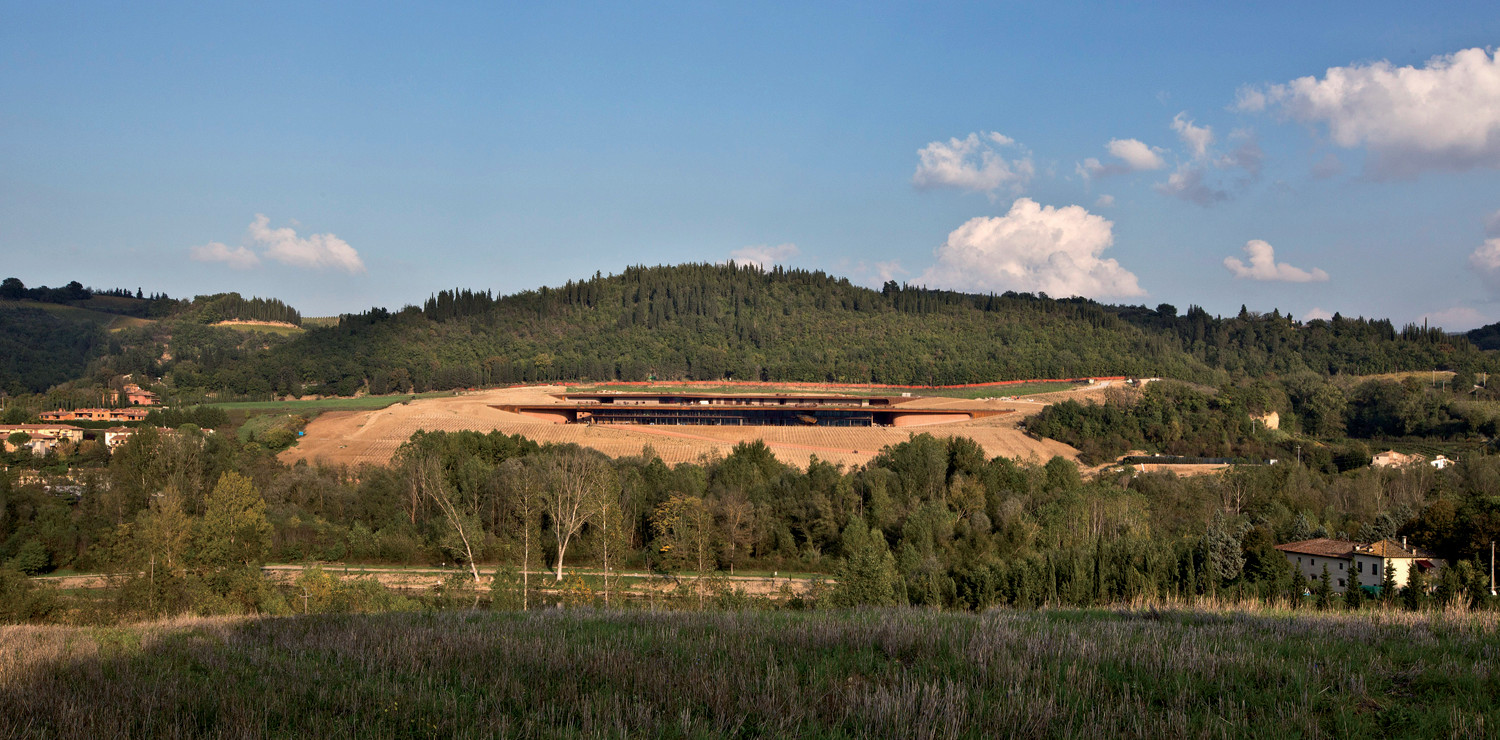Modern and avant-garde wineries in Tuscany
The cathedrals of wine in Tuscany
Tuscany, a land kissed by the sun and covered with vineyards, saw the birth of the first monumental winery in modern history in the fifteenth century. A real Wine Cathedral, built by the Sienese architect Baldassare Peruzzi (1481-1536), considered the world’s most beautiful cellar hidden in the basement of Palazzo Ricci in Montepulciano. It is an example of architecture that inspired many other wineries throughout Italy, however Tuscany continued to dominate.
Since the eighties of the last century, the Maremma with its famous wines, is the most active, and now houses the most famous cellars also recognised as temples signed by famous architects.
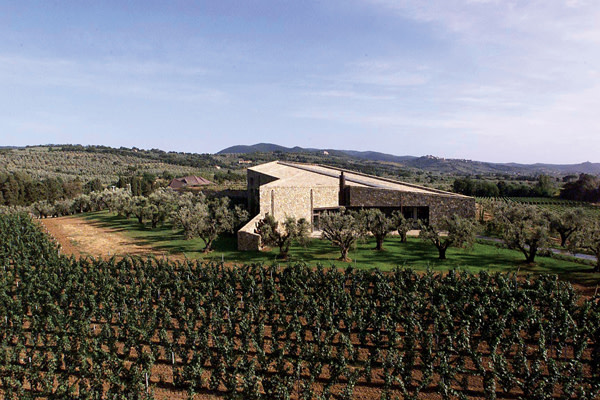 Ca' Marcanda
Ca' MarcandaAmong the most famous Ca ‘Marcanda, a Tuscan company of Angelo Gaja.It is located along the Bolgherese in Castagneto Carducci. Architect Giovanni Bo created for this winery an open mesh structure, which penetrates underground to create amazing light effects. The stones covering the external walls, all found during an excavation, camouflage the cellar in nature.
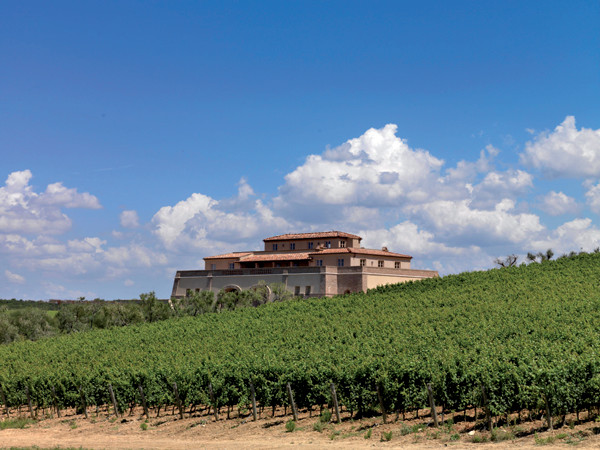 Tenuta Argentiera
Tenuta Argentiera The Tenuta Argentiera,owned by the Fratini brothers and facing the sea of Donoratico dominates the skyline. Mostly underground, with a low visual impact, it is designed accordingly to the typical architectural styles of the Tuscan coast, with thick and pitched walls hiding an underground barique cellar with an impressive vaulted ceiling.
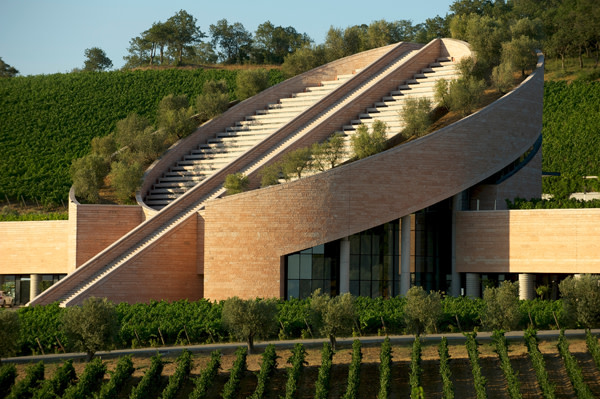 Petra
Petra Over the last decade The Petra winery has been causing quite a stir in Suvereto. Conceived over ten years ago by the Moretti family which committed Mario Botta to build a winery with a cylindrical volume sectioned with an inclined plane in stone that seems to merge with the surrounding area.
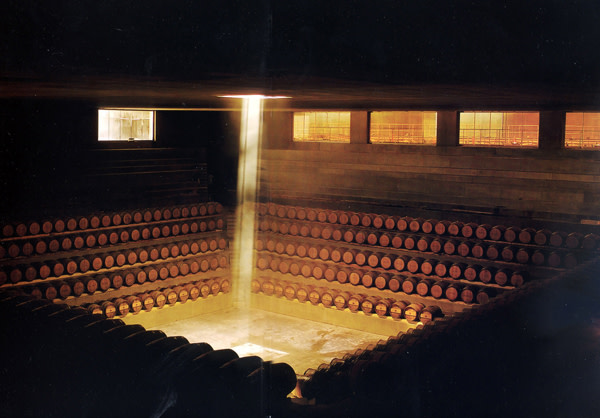 Rocca di Frassinello
Rocca di Frassinello In Gavorrano, along the Monteregio di Massa Marittima Wine Road you can come across the Cantina Rocca di Frassinello owned by editor Paolo Panerai and designed by architect Renzo Piano. Elegance and harmony come together without giving up functionality: carved into the rock, 50 metres deep, the barique cellar is the heart of the wine cellar, enlightened by mirrors that reflect on the tower ‘acchiappaluce’, whose summit dominates the landscape .
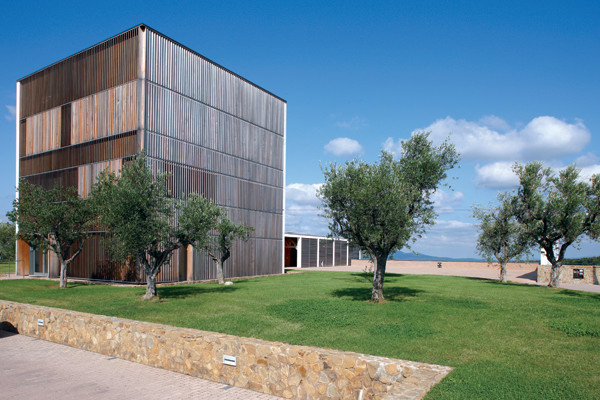 Colle Massari
Colle Massari From Grosseto heading to the Amiata a Cinigiano, in Poggi del Sasso is the Cantina Collemassari owned by the Tipa brothers and built by Studio Archos of Edward Milesi: it appears to be a wooden box with a white wing coming out of the hill, a large underground laboratory which stretches 6 thousand square metres on four levels.
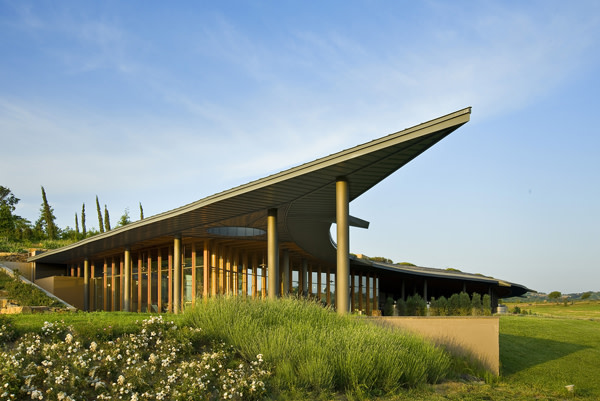 Frescobaldi - Tenuta dell'Ammiraglia
Frescobaldi - Tenuta dell'Ammiraglia The Frescobaldi family, to enrich the carnet of its properties, has chosen in Magliano in Toscana the tenuta dell’Ammiraglia ‘, a masterpiece of architecture and eco-sustainability. Created by Sartogo Architetti Associati studio, it looks like a house built into the ground, the cover is made with the earth itself, to create an ideal microclimate due to the natural seeping.
Leaving the Maremma, the
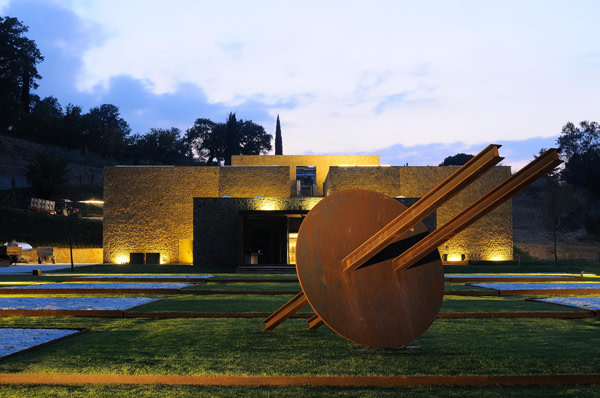 Cantina Icario
Cantina Icario owned by the Cecchetti family, is located in Fucile di Montepulciano, designed by Studio Valle as a combination of material casing, glass surfaces, lighting effects and sculptural tributes to the four elements: water, air, earth and fire
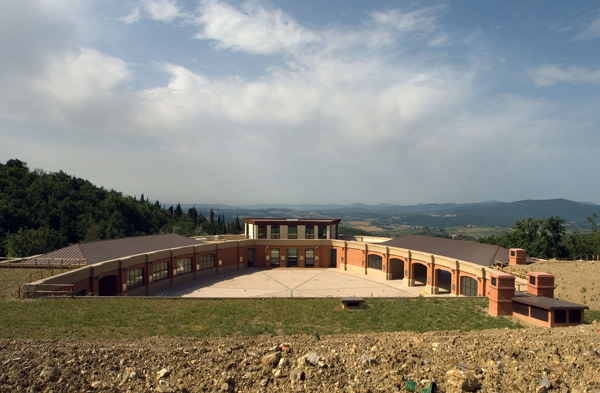 Castello di Fonterutoli
Castello di FonterutoliIn the heart of Chianti Classico, in Castellina, Chianti is the Cantina di Fonterutoli of the Mazzei family, designed “household”, by architect Agnese Mazzei as a natural vault nestled below the village, with exposed rocks and a wellspring that ensures optimum moisture.
Still in the Chianti Classico, in San Casciano Val di Pesa, there is the monumental Cantina Antinoridesigned by Studio Archea to merge with nature: structure and landscape are at one with one other. The cover coincides with a new level of the ground, a field with vines, and the slight difference in the ground level is meant for supplying the cellar with natural light.
The old and the new meet in Chianti Colli Fiorentini in the cellar of Tenimenti Ruffino of Constellation Brands and the Folonari family .In Poggio Casciano is the creation of studio Cadeo Architettura which, while leaving the surrounding landscape unaltered, managed to create in the underground adjacent to the main house a modern cellar connected to the oldest part of the villa with a spectacular underground tunnel.






